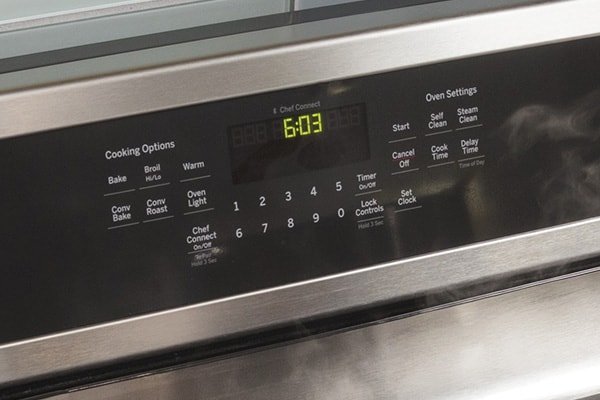
Error codes like “OE” are your appliance’s way of sending you a message, much like a car’s check engine light. It tells you that something isn’t quite right under the hood. In the case of GE ovens and ranges, the “OE” error code is typically related to the oven’s electronics or the failure of essential components. It might seem like a small hiccup, but this little code can be a big deal if not addressed. So, before you start whipping up those cookies or roasting that perfect chicken, it’s important to understand what this code means for your kitchen safety.
Understanding the OE Error Code
The “OE” error code in GE ovens and ranges is often associated with problems related to the oven’s temperature sensors or electronic control board. Think of the oven’s control board like the brain of the appliance: it processes information and decides what action to take. When this brain detects an issue, it flashes the “OE” code to alert you. This could be caused by a faulty sensor, a short circuit, or even a power surge that affects the electronic components.
What’s interesting is that this error isn’t always a sign of a major malfunction. Sometimes, it can be triggered by something as simple as a loose wire or a glitch in the system. However, it’s crucial not to ignore it. Continuing to use an oven with such a warning can be risky. It could lead to uneven cooking, which might ruin your meal, or in rare cases, increase the risk of electrical issues if the underlying problem isn’t corrected.
So, what should you do when you see this error? The first step is to safely turn off the oven and unplug it if possible. This ensures no further damage occurs and allows the appliance to reset. If you feel comfortable doing so, inspecting the wiring for visible issues can be helpful. But remember, playing the role of a DIY technician has its limits. If the error persists, professional help is your best bet.
Safety Concerns with Using a Faulty Oven
You might be wondering why there’s such a fuss about one little error code. Well, continuing to use an oven displaying the “OE” error can lead to a host of safety concerns. For starters, if the error is due to a malfunctioning temperature sensor, your food could either remain undercooked or become charred. This inconsistency isn’t just frustrating, it’s a health hazard. Eating undercooked food can cause foodborne illnesses, while burned food isn’t just unappetizing—it can be a fire hazard.
In addition, if the “OE” code is caused by an electrical issue, there’s always a risk of electrical shock or even a fire. Appliances are designed with safety in mind, but when they begin displaying errors, it’s like they’re waving a red flag saying, “Something’s not right!” Ignoring these signals is like ignoring the oil light in your car—it might be okay for a little while, but soon, it could cause real damage.
Therefore, it’s wise to address the error head-on rather than risking further complications. It might seem inconvenient to call in a repair technician, but the assurance of a safely functioning oven is well worth it. Plus, modern ovens are complex machines, and having an expert take a look ensures the problem is accurately identified and properly resolved.
How to Handle the OE Error Code: A Step-by-Step Guide
Alright, so you’ve got the “OE” error code on your GE oven or range. Here’s the deal: addressing this issue can be straightforward if you follow a few steps. First, ensure you power down the oven completely. This is not only for your safety but also sometimes gives the oven a chance to reset itself, like rebooting a computer.
Next, perform a quick visual inspection. Check if there are visible signs of damage like burnt wires or frayed connections. If you spot any, it’s a clear sign that professional help is needed. However, if everything looks intact and the error persists once you power the oven back on, it’s time to consult your owner’s manual. This booklet is packed with troubleshooting tips that are often overlooked.
If you’re unable to resolve the issue yourself, don’t hesitate to reach out to a certified GE technician. They have the tools and expertise to delve deeper into electronic components and possibly replace malfunctioning parts like the temperature sensor or control board. Keep in mind, attempting to fix it yourself without proper knowledge might lead to more harm than good.
Prevention Tips to Avoid Future Errors
Prevention, as they say, is better than cure. Taking a few proactive steps can help you avoid facing the “OE” error code in the future. Much like how regular oil changes keep your car running smoothly, routine maintenance on your oven can keep it in top shape.
Firstly, ensure your oven stays clean and free from grease buildup, which can interfere with its sensors and heating elements. It’s a good habit to wipe down the interior of your oven regularly, especially after cooking meals that might splatter.
Secondly, be wary of power surges. These can wreak havoc on your electronic appliances, including your oven’s sensitive electronic control panel. An investment in a surge protector is worth considering, especially if you live in an area prone to electrical storms or power fluctuations.
Lastly, make it a point to have your appliance inspected by a professional every couple of years. They can spot potential problems before they become serious, saving you time, money, and headaches down the road. With these tips, you can enjoy cooking without the worry of unexpected error codes interrupting your culinary adventures.